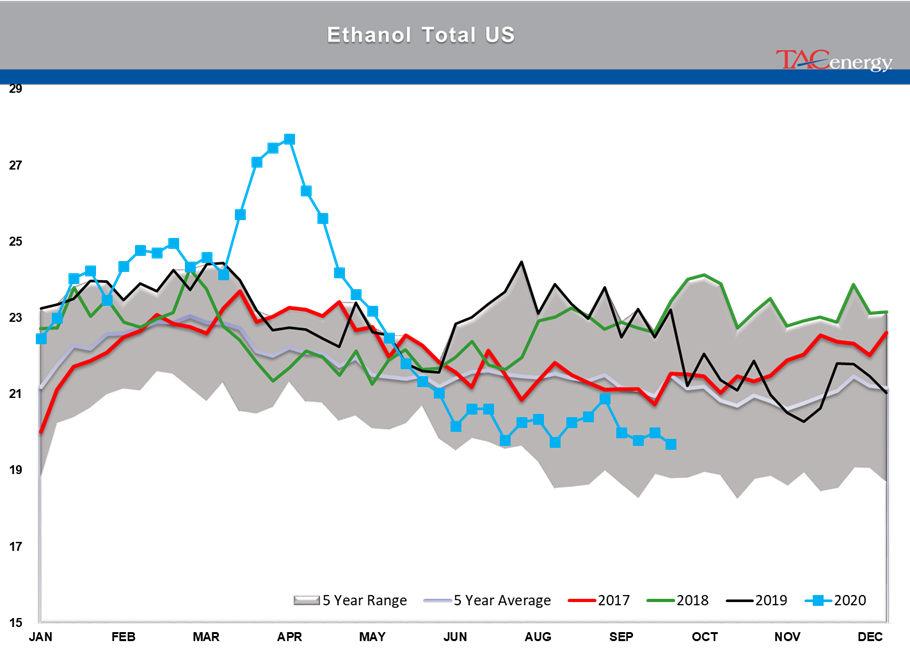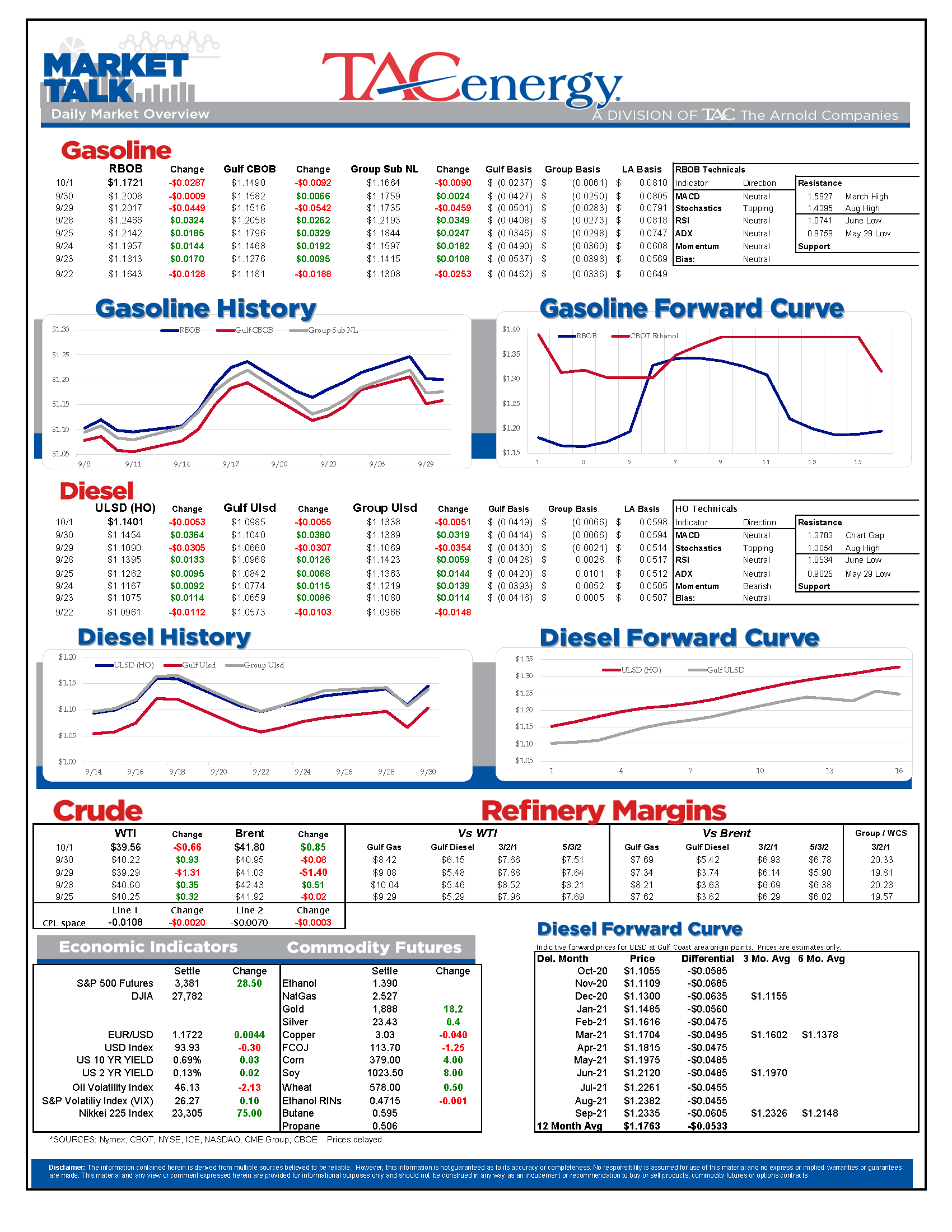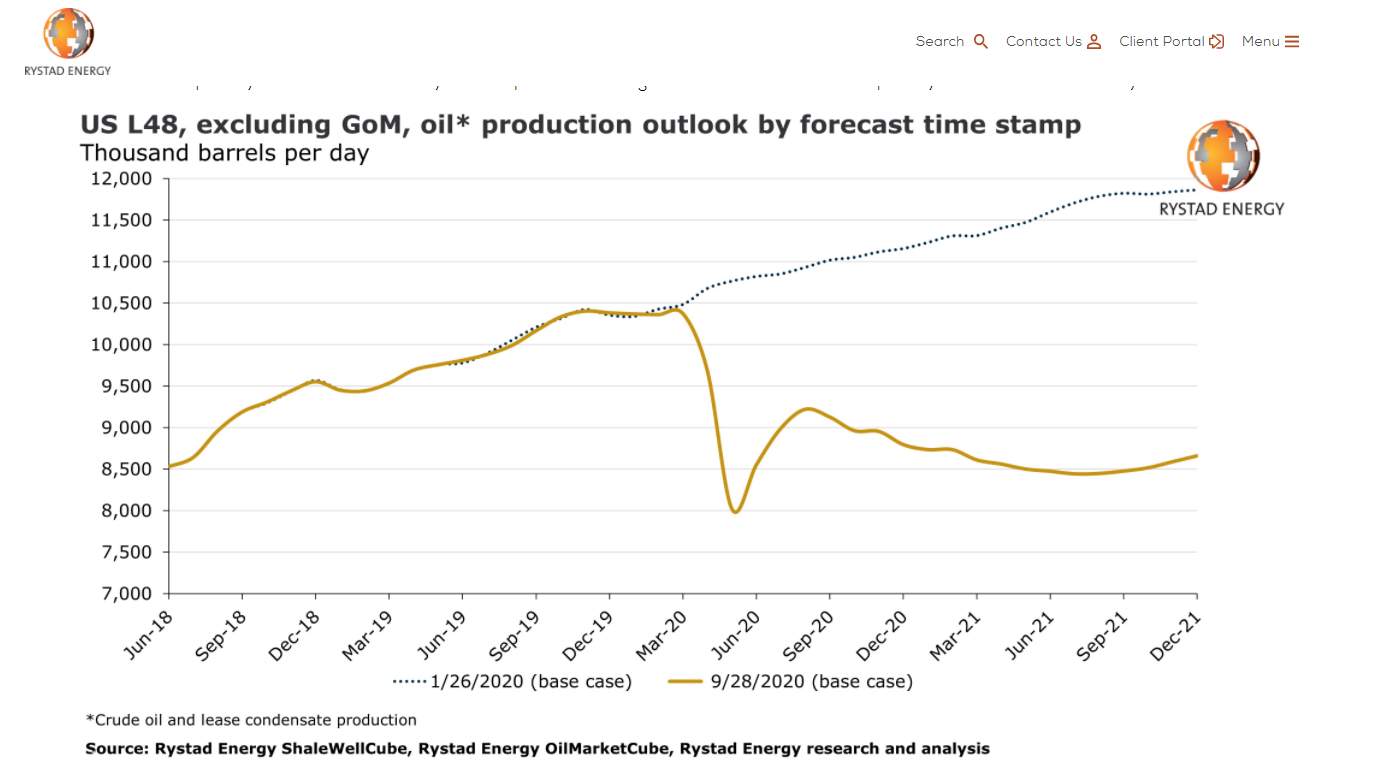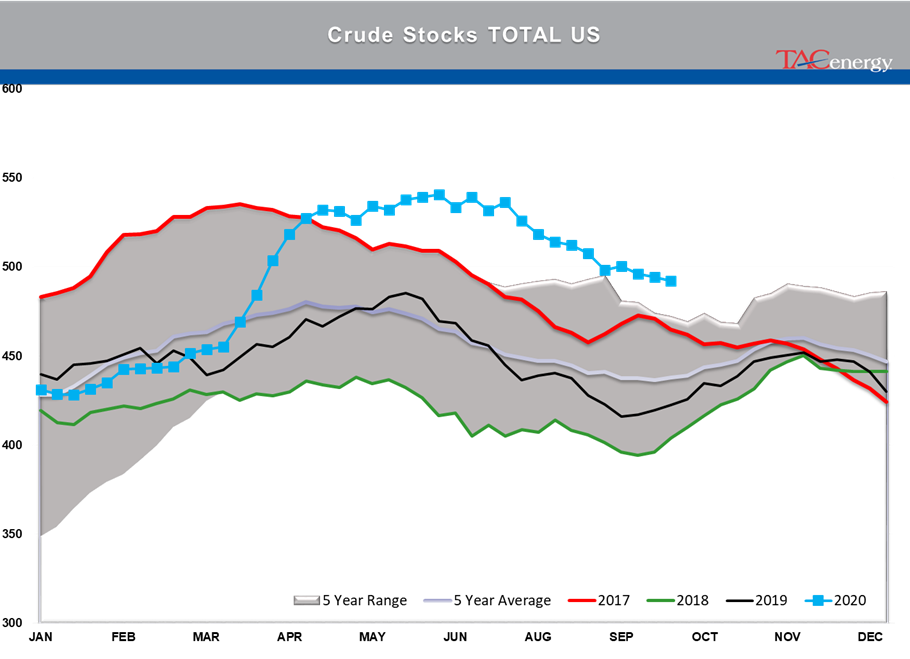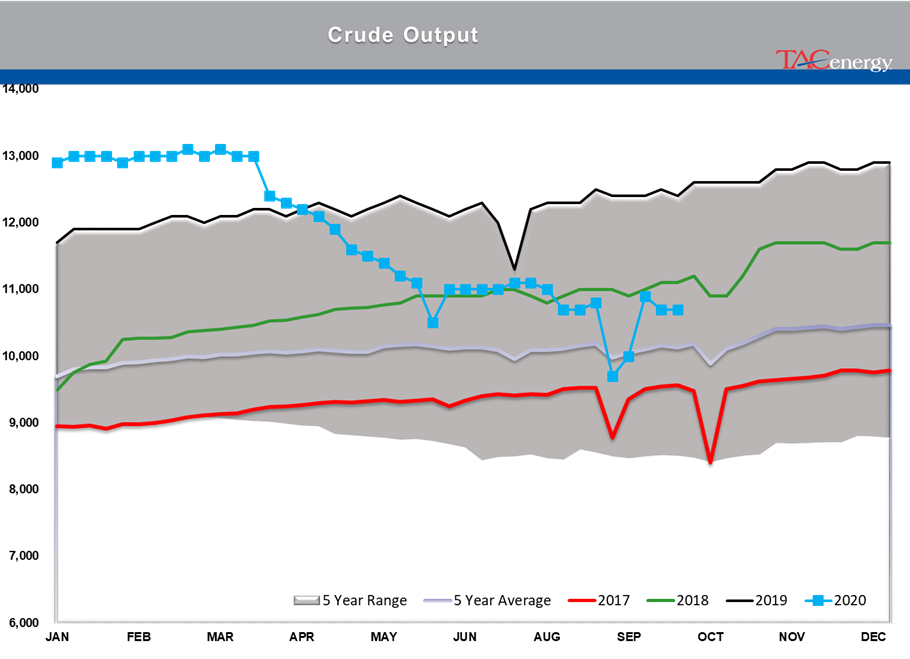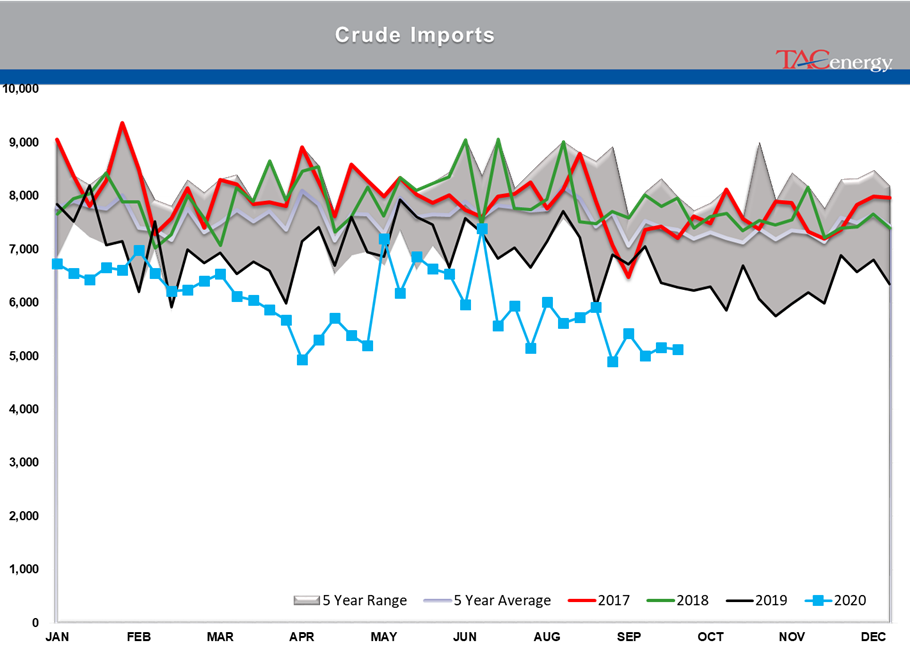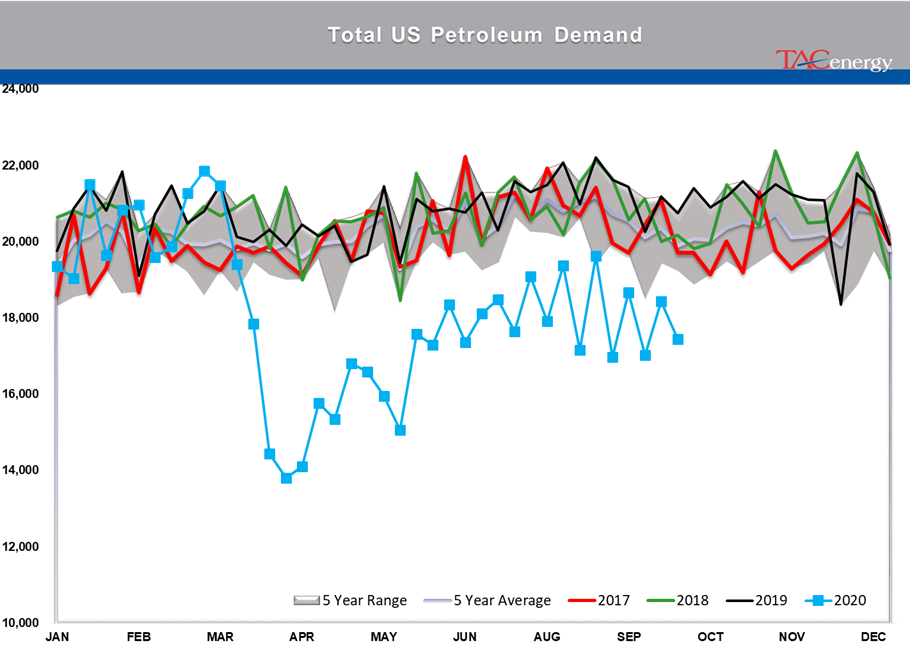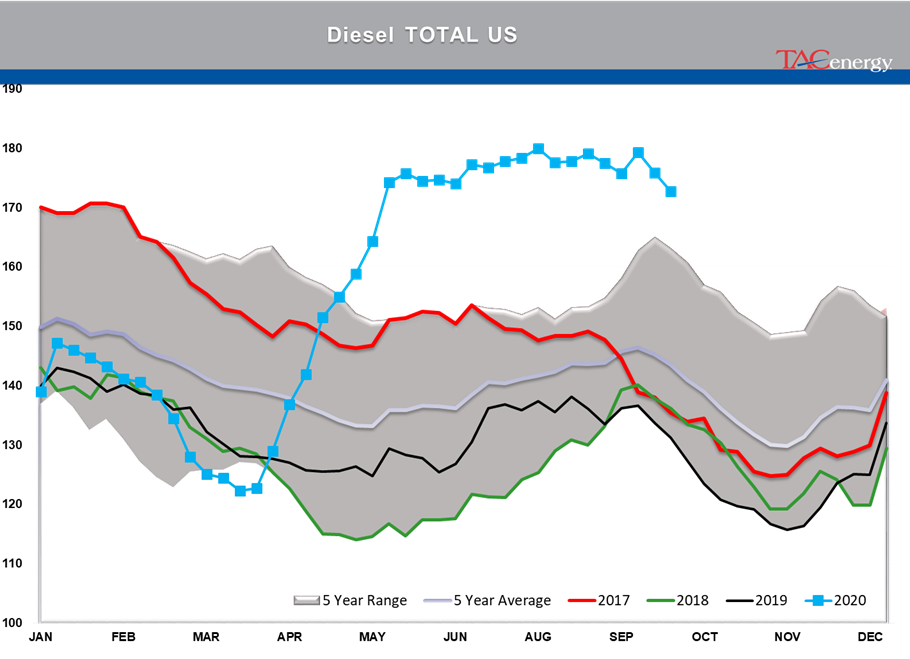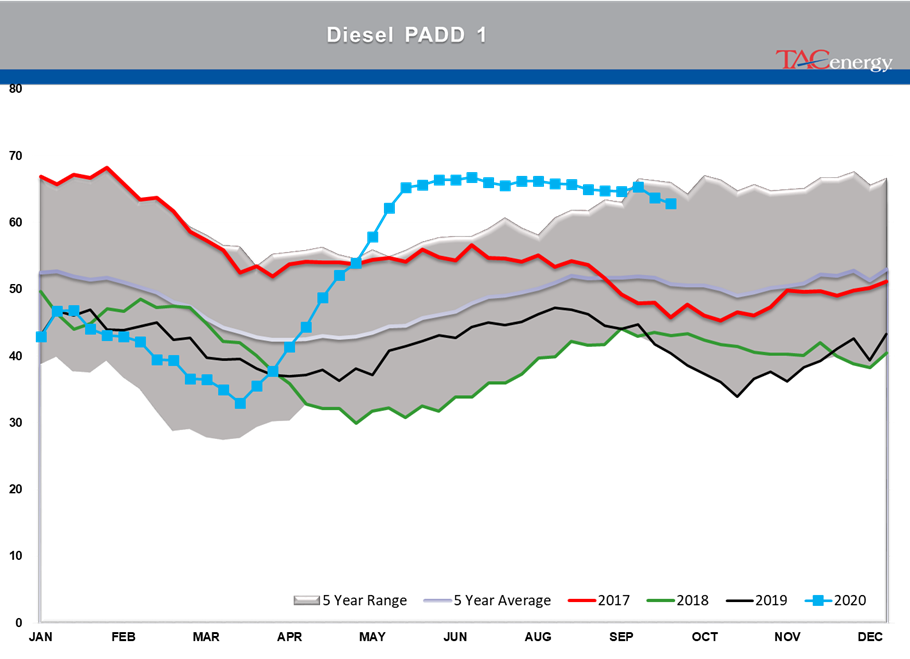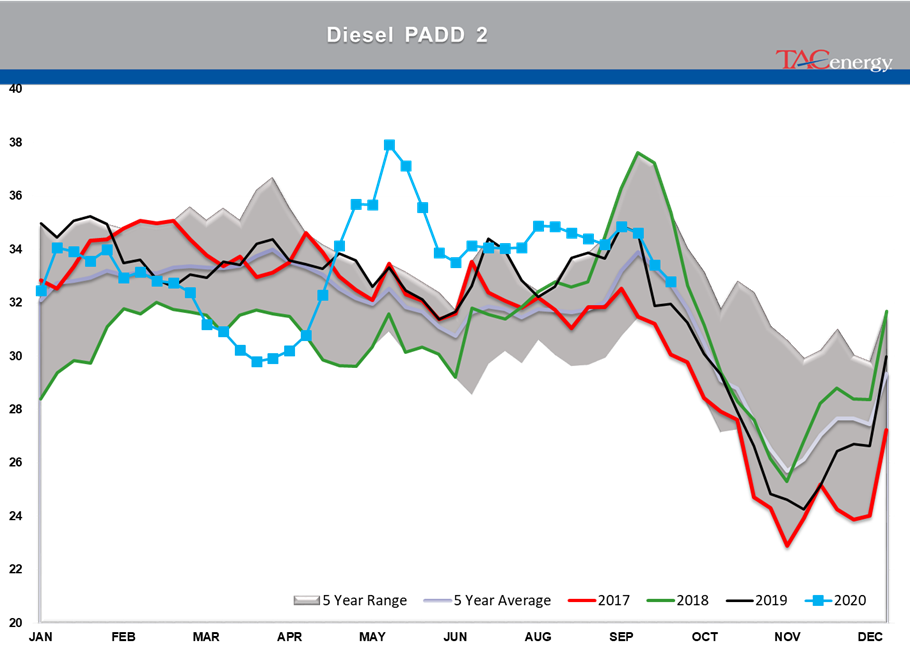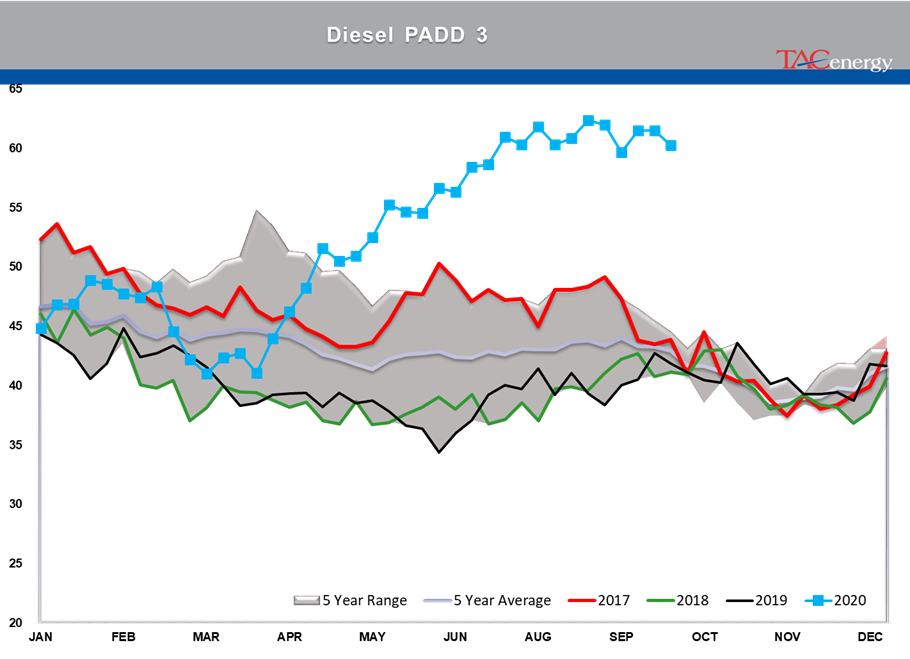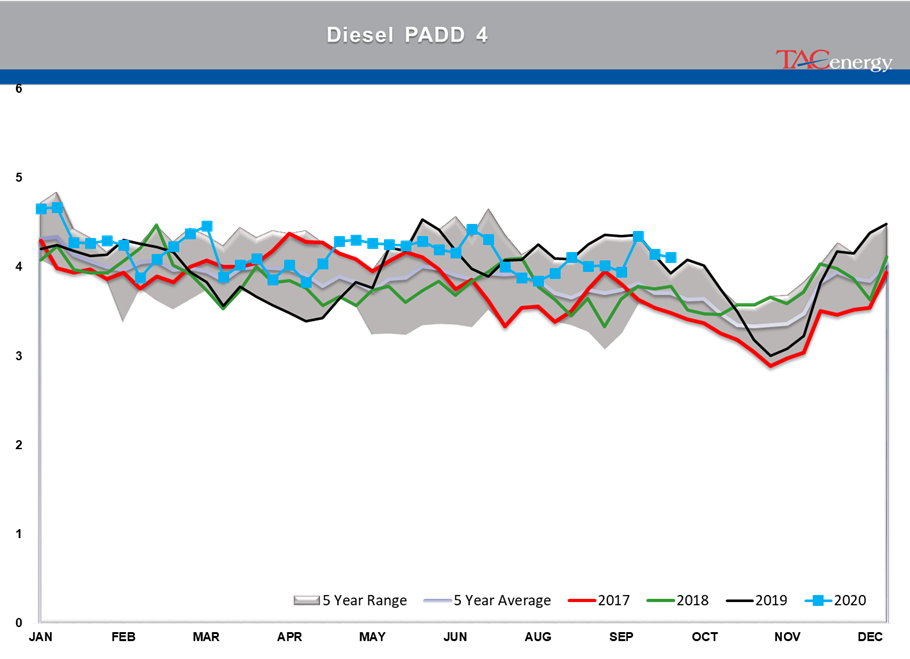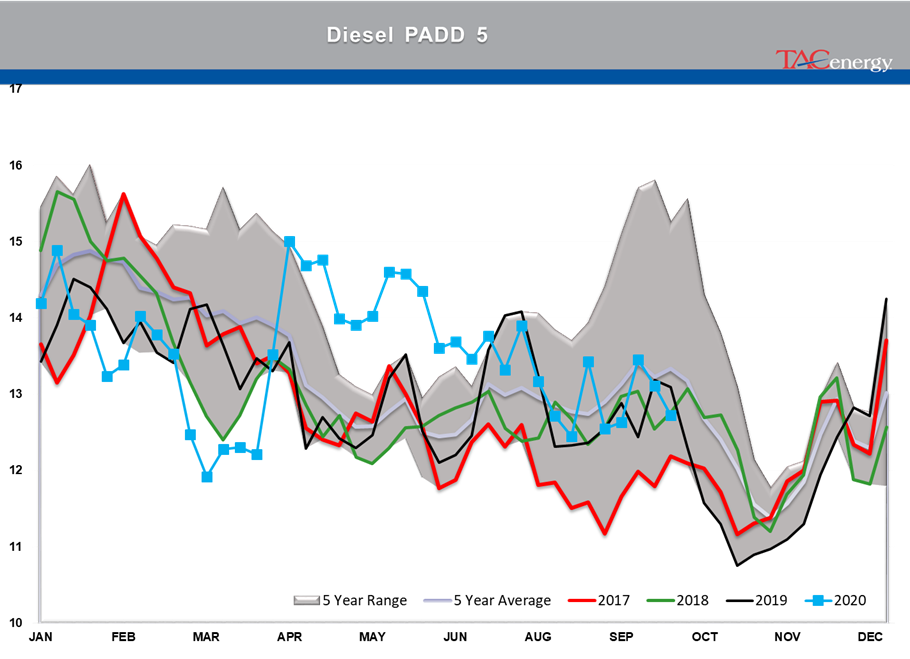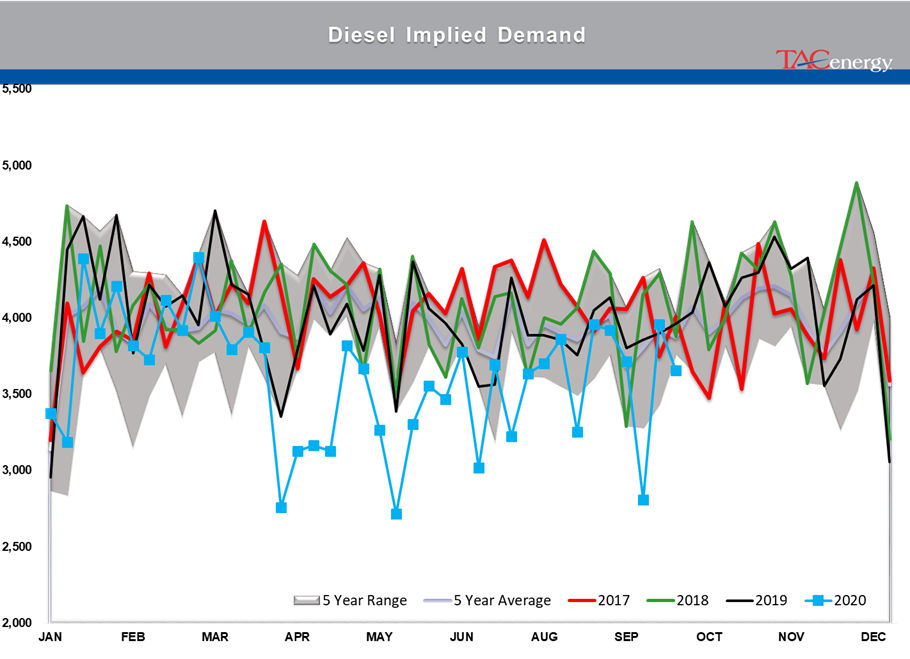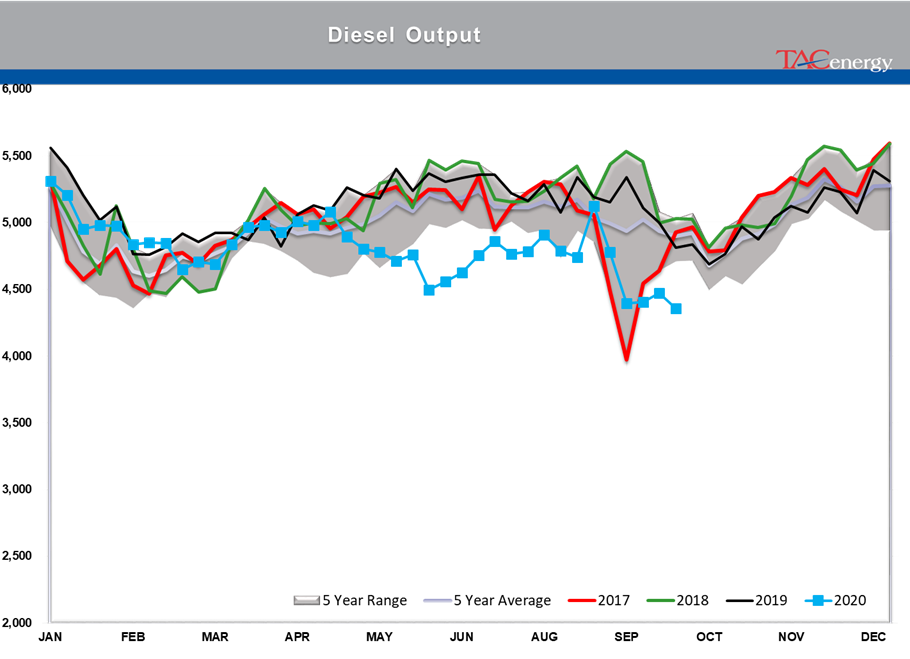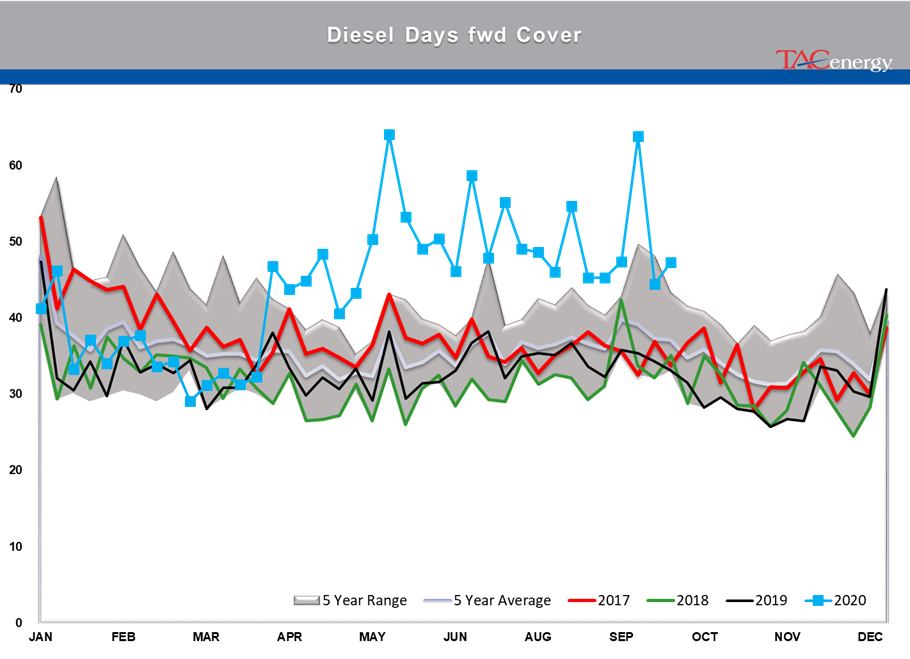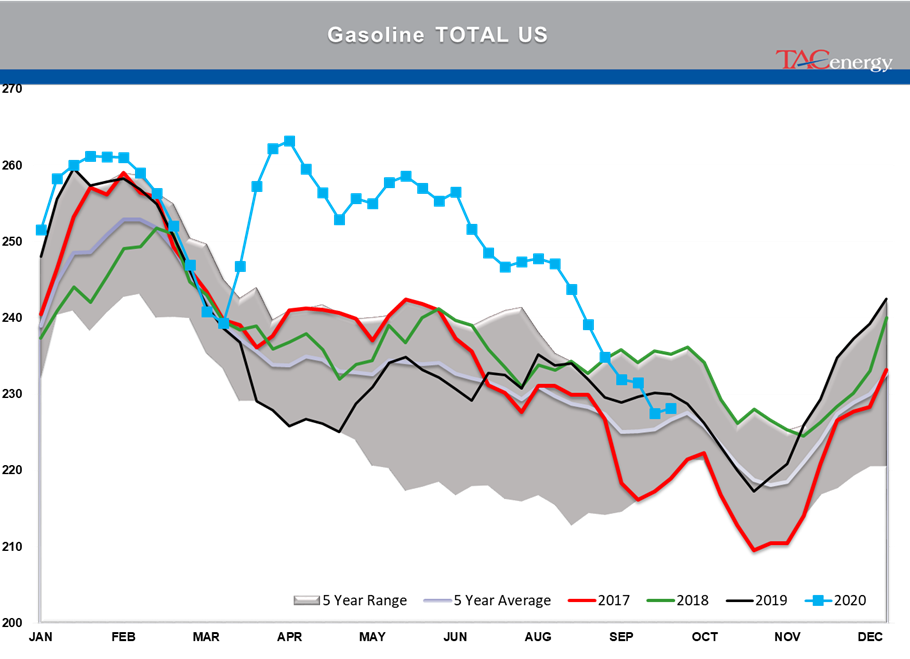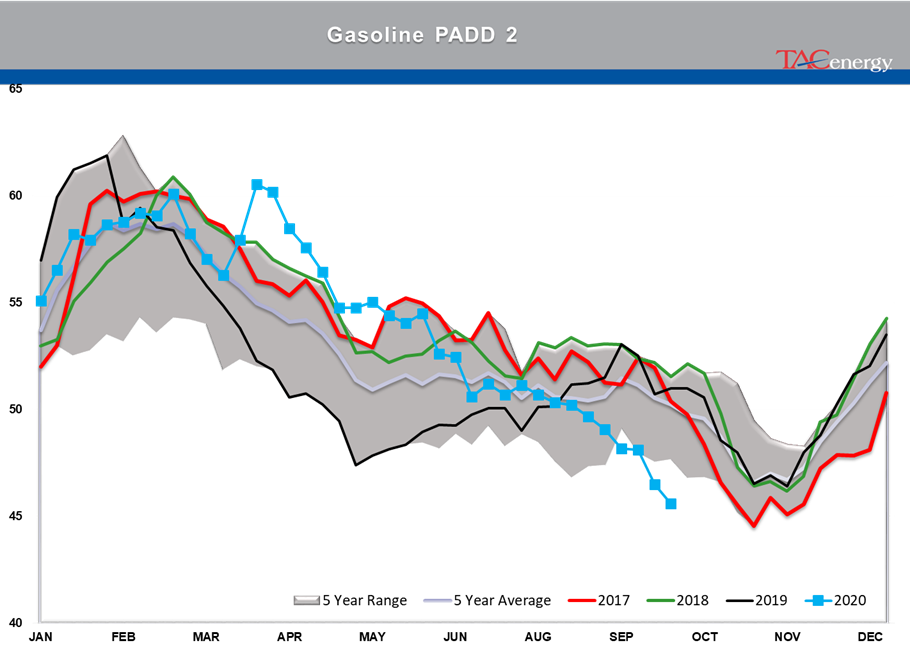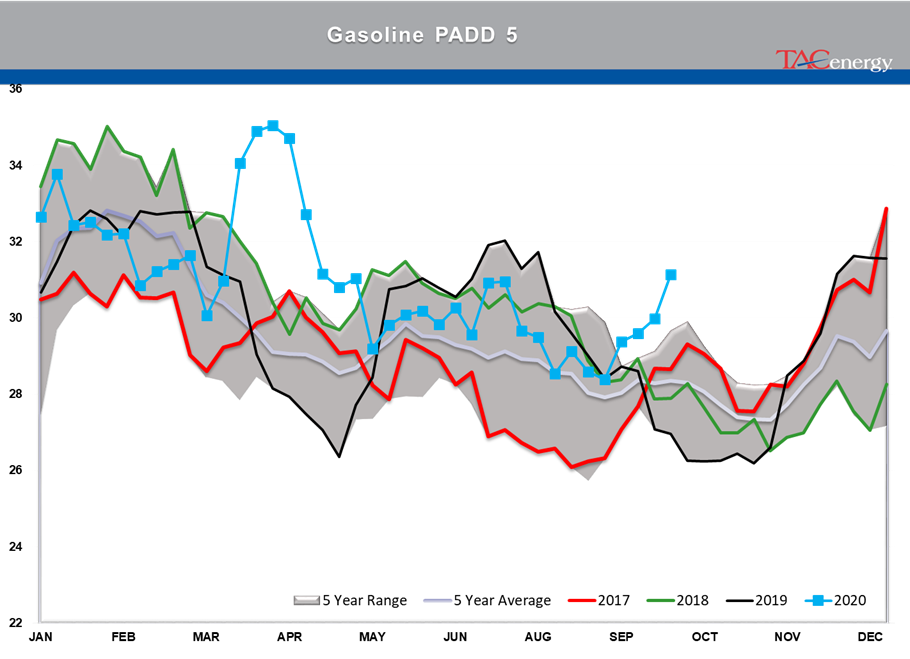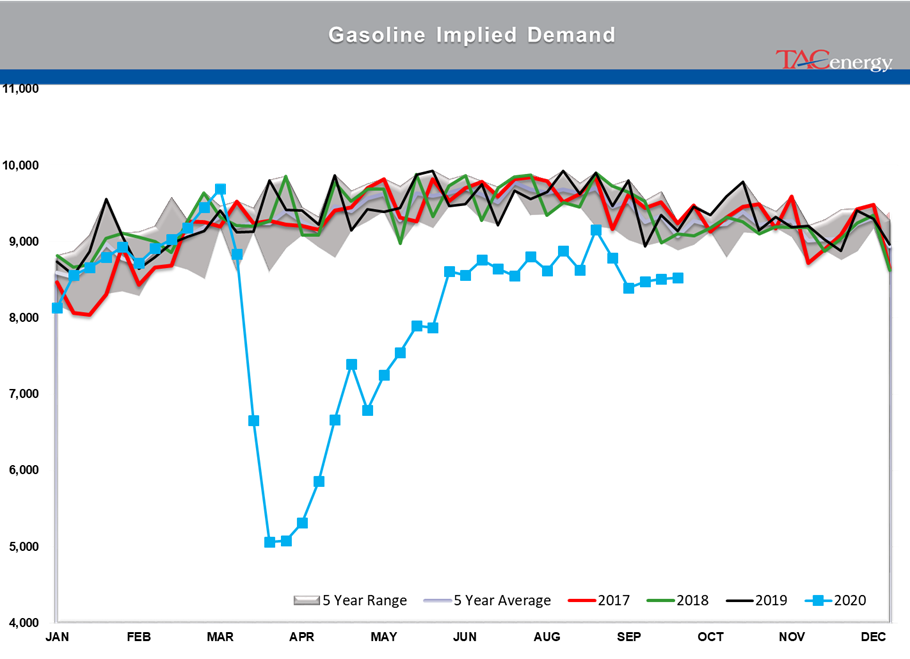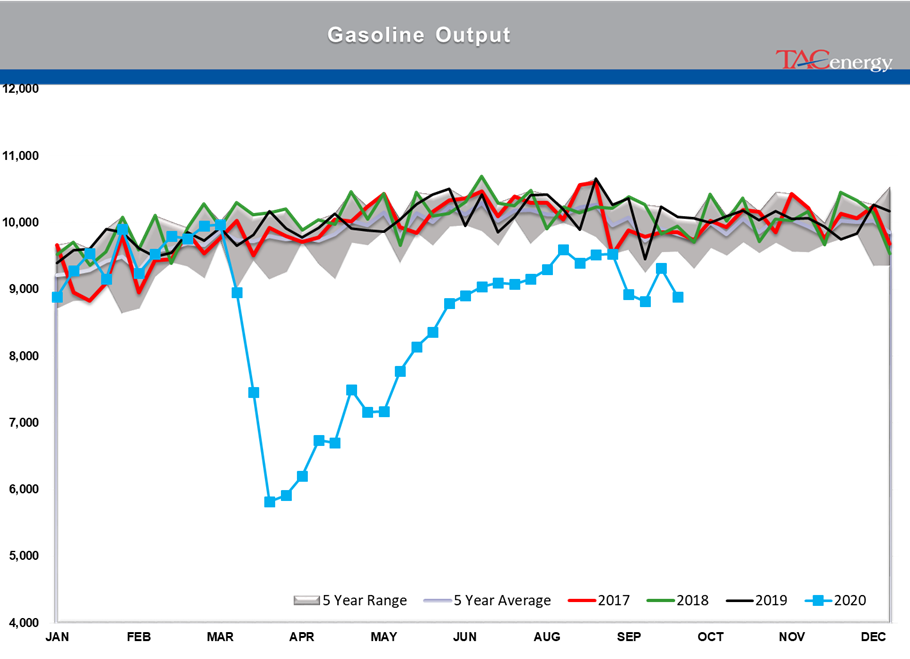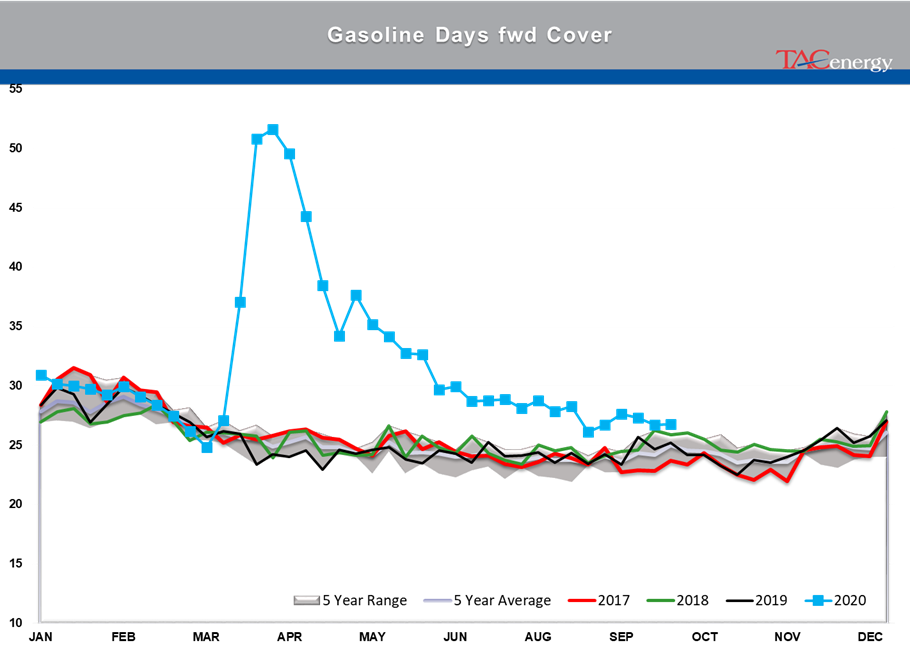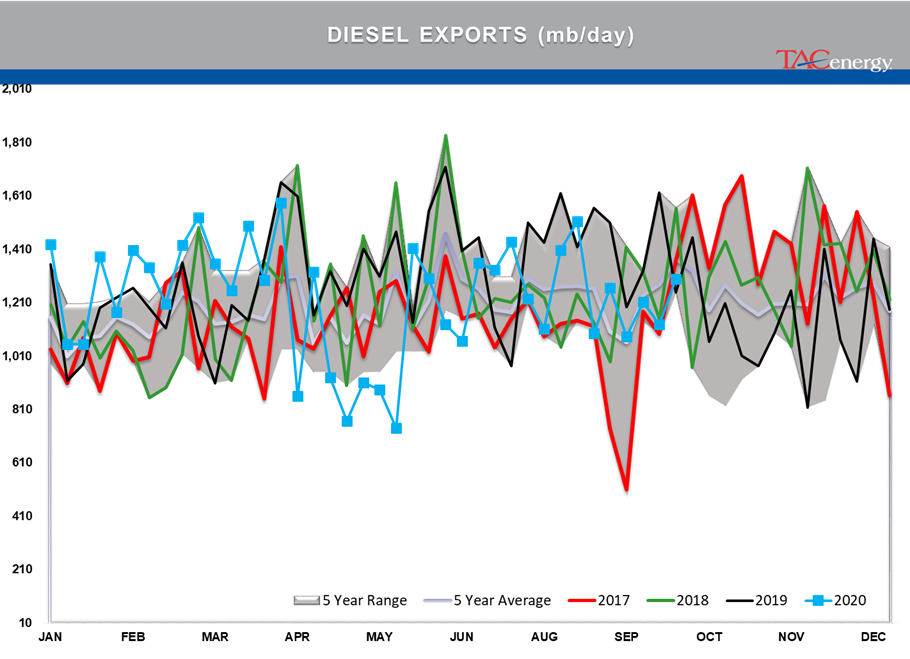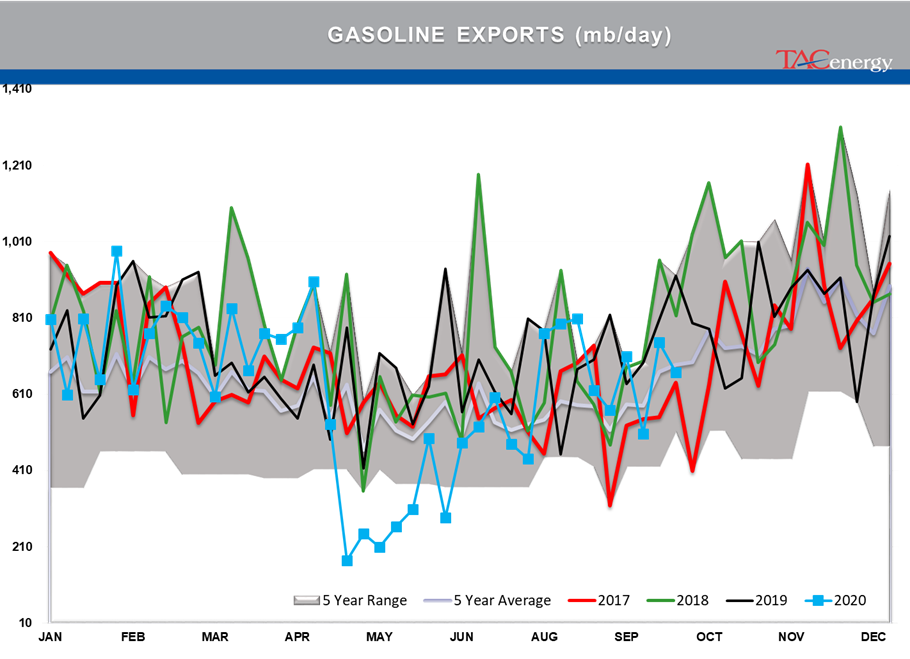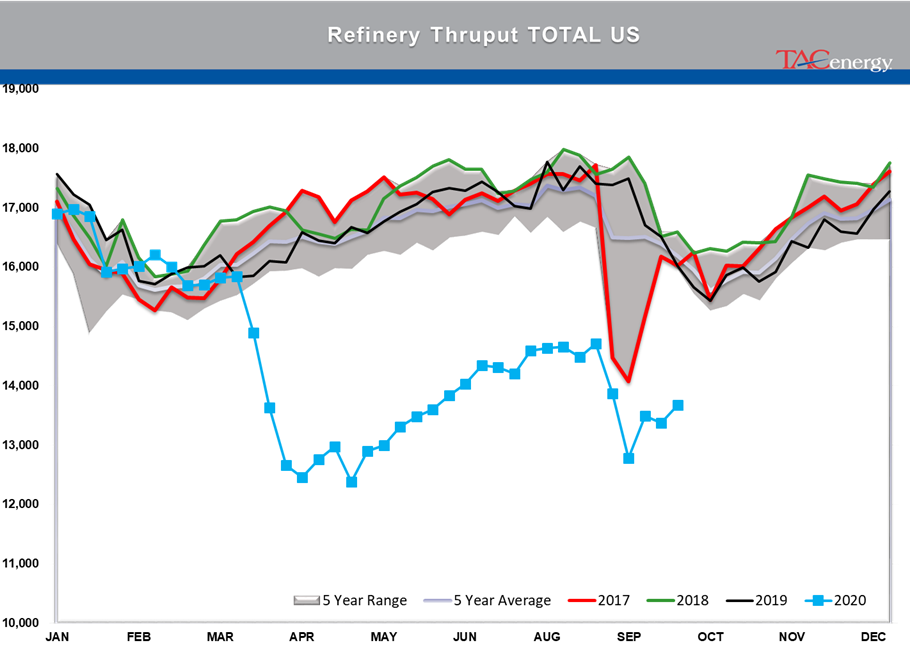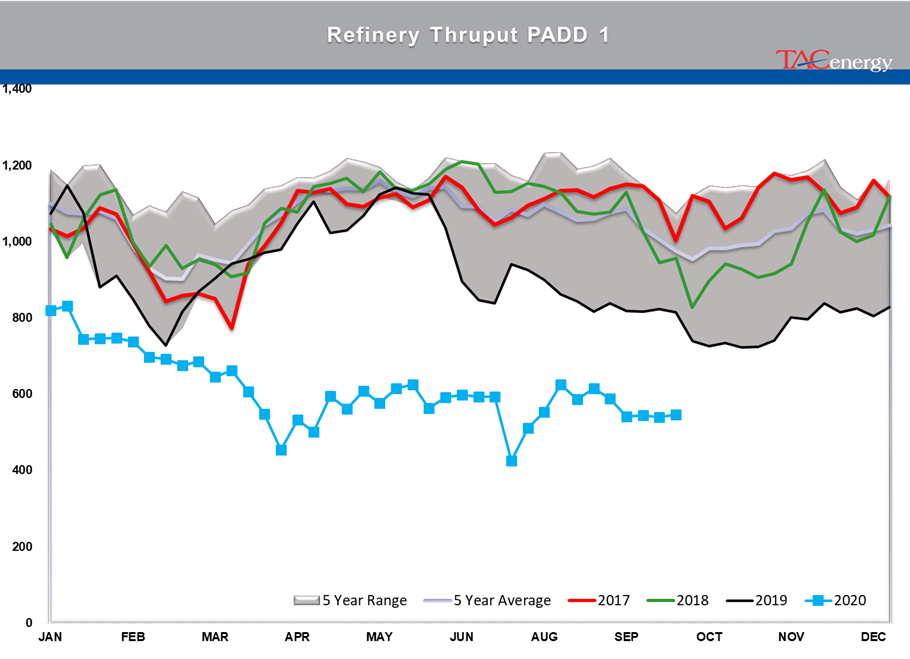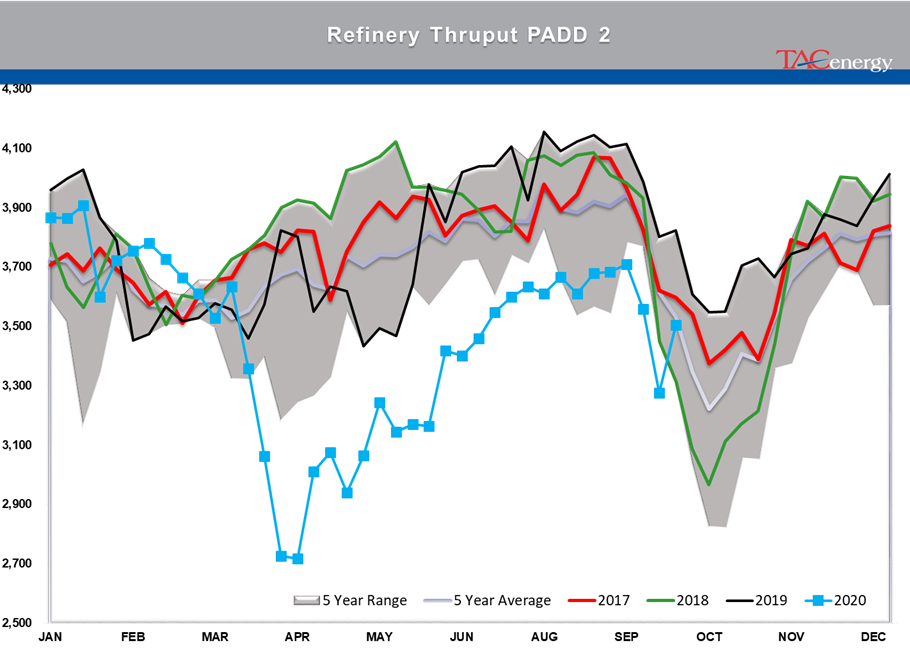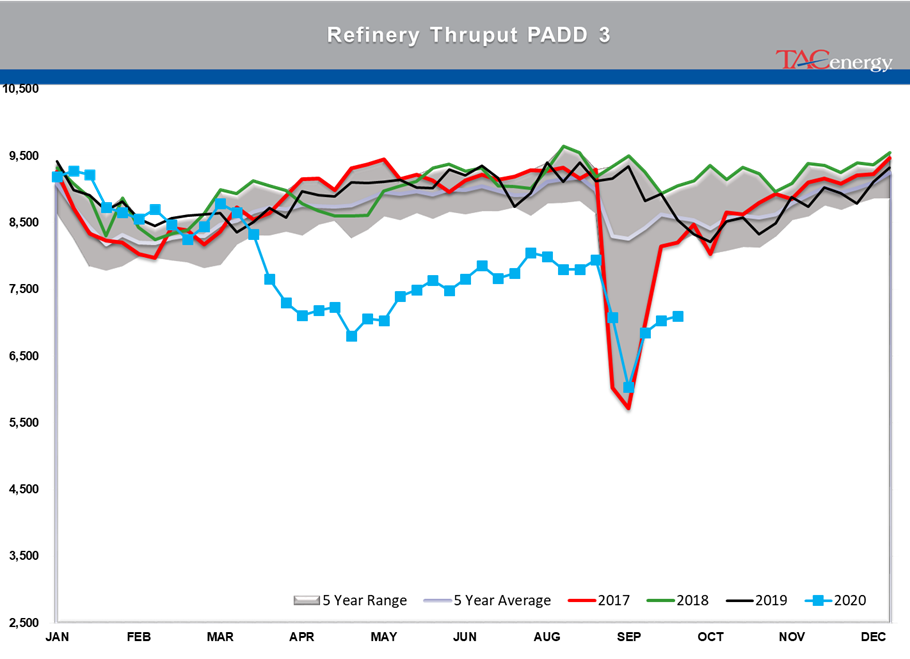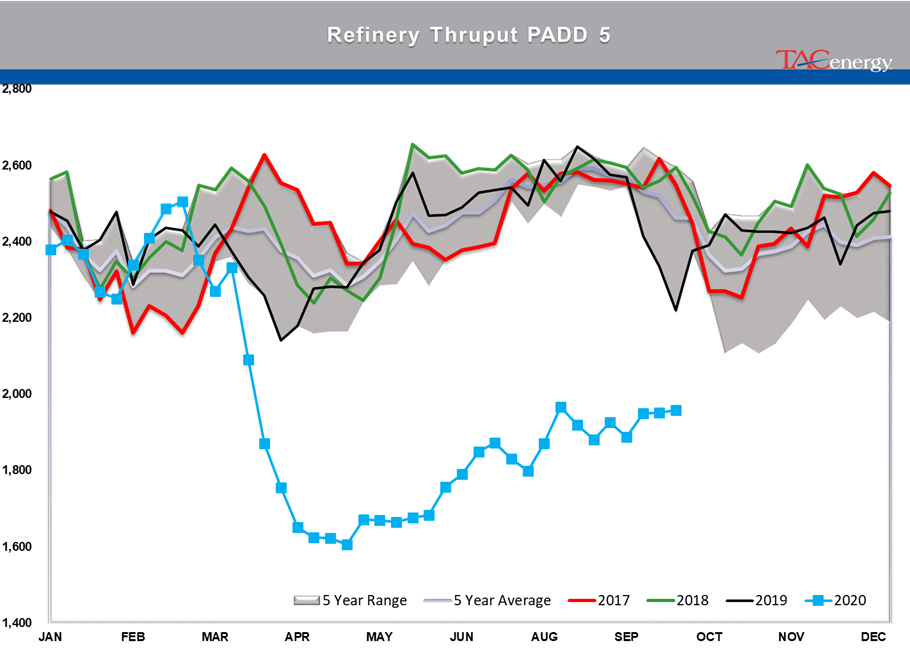Real-World Impact Of Refinery Shutdowns

The fourth quarter is starting on a soft note for energy markets with the big 4 petroleum contracts all trading modestly lower to start the day, after staging a healthy recovery bounce to finish off September. This time yesterday it was looking like we may be setting the stage for a substantial move lower in product prices, but the selling pressure didn’t last long after 8 a.m., leaving the complex stuck in its sideways pattern.
After a rough September, U.S. equity markets are pointed higher to start October trading, but so far that strength has not carried over to energy prices.
Yesterday’s DOE report did little to sway price action as inventory and demand estimates had relatively minor moves. Total refinery runs in the U.S. remain lower now than they were after Hurricane Harvey knocked nearly 1/4th of the country’s capacity offline three years ago, and yet this time there are no supply shortages to speak of as demand continues to lag.
With the seasonal demand slowdown looming for gasoline, and diesel inventories still near record highs, we may see refinery run rates continue to decline over the next month, with more outright closures still a distinct possibility. This article highlights the real-world impact of the refinery shutdowns that have already happened this year.
The CFTC ordered Sunoco LP to pay a $450,000 fine for spoofing crude oil, gasoline and diesel contracts in 2014. The statement says the trader involved used 50-100 lot increments (50,000-100,000 barrels or roughly 2-4 million gallons of notional volume) to push the market towards smaller positions they actually planned to execute, and once done would cancel the larger orders. This is just a day after JP Morgan agreed to pay $920 million for spoofing metals and treasury markets. Based on the size of the fines, you can get a feel for just how huge the banks’ manipulative trading practices were in comparison.
A Rystad energy report released yesterday suggests that U.S. onshore crude production likely peaked in August and will decline over the next year as prices are unlikely to recover enough to spur more drilling activity.
Click here to download a PDF of today's TACenergy Market Talk.
News & Views
View All
Energy Futures Are Caught Up In Headline Tug-O-War This Morning
Energy futures are caught up in headline tug-o-war this morning with Canadian oil production concerns and a positive US GDP report trying to push prices higher while sinking Chinese demand worries and Gaza ceasefire hopes are applying downward pressure. The latter two seem to be favored more so far this morning with WTI and Brent crude oil futures down ~45 cents per barrel, while gasoline and diesel prices are down about half a cent and two cents, respectively.
No news is good news? Chicago gasoline prices dropped nearly 30 cents yesterday, despite there not being any update on Exxon’s Joliet refinery after further damage was discovered Wednesday. Its tough to say if traders have realized the supply situation isn’t as bad as originally thought or if this historically volatile market is just being itself (aka ‘Chicago being Chicago’).
The rain isn’t letting up along the Texas Gulf Coast today and is forecasted to carry on through the weekend. While much of the greater Houston area is under flood watch, only two refineries are within the (more serious) flood warning area: Marathon’s Galveston Bay and Valero’s Texas City refineries. However, notification that more work is needed at Phillip’s 66 Borger refinery (up in the panhandle) is the only filing we’ve seen come through the TECQ, so far.
Premiums over the tariff on Colonial’s Line 1 (aka linespace value) returned to zero yesterday, and actually traded in the negatives, after its extended run of positive values atypical of this time of year. Line 1’s counterpart, Line 2, which carries distillates from Houston to Greensboro NC, has traded at a discount so far this year, due to the healthy, if not over-, supply of diesel along the eastern seaboard.
Click here to download a PDF of today's TACenergy Market Talk.

WTI And Brent Crude Oil Futures Are Trading ~$1.50 Per Barrel Lower In Pre-Market Trading
The across-the-board drawdown in national energy stockpiles, as reported by the Department of Energy yesterday, stoked bullish sentiment Wednesday and prompt month gasoline, diesel, and crude oil futures published gains on the day. Those gains are being given back this morning.
The surprise rate cut by the People’s Bank of China is being blamed for the selling we are seeing in energy markets this morning. While the interest rate drop in both short- and medium-term loans won’t likely affect energy prices outright, the concern lies in the overall economic health of the world’s second largest economy and crude oil consumer. Prompt month WTI and Brent crude oil futures are trading ~$1.50 per barrel lower in pre-market trading, gasoline and diesel are following suit, shaving off .0400-.0450 per gallon.
Chicagoland RBOB has maintained its 60-cent premium over New York prices through this morning and shows no sign of coming down any time soon. Quite the opposite in fact: the storm damage, which knocked Exxon Mobil’s Joliet refinery offline on 7/15, seems to be more extensive than initially thought, potentially extending the repair time and pushing back the expected return date.
There are three main refineries that feed the Chicago market, the impact from one of them shutting down abruptly can be seen in the charts derived from aforementioned data published by the DOE. Refinery throughput in PADD 2 dropped 183,000 barrels per day, driving gasoline stockpiles in the area down to a new 5-year seasonal low.
While it seems all is quiet on the Atlantic front (for now), America’s Refineryland is forecasted to receive non-stop rain and thunderstorms for the next four days. While it may not be as dramatic as a hurricane, flooding and power outages can shut down refineries, and cities for that matter, all the same, as we learned from Beryl.

